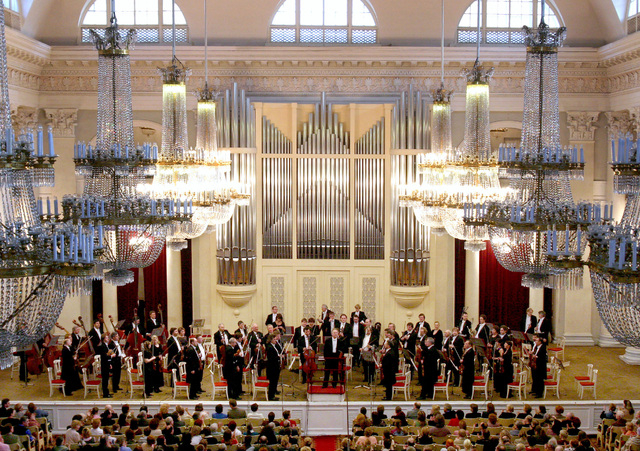St. Petersburg Philharmonic finishes with flourish

In addition to March and early April concerts by the Las Vegas Philharmonic Orchestra and the Philharmonic Pops, the first 18 days of March will bring three international orchestras to town. The first was the St. Petersburg Philharmonic at The Smith Center on Saturday; next will be Israel’s Haifa Symphony at UNLV’s Artemus Ham Hall on March 13, followed five days later, at The Smith Center, by Britain’s Academy of St. Martin in the Fields with brilliant young American violinist and conductor Joshua Bell.
What an abundance of musical riches!
The Russian ensemble was led by its permanent conductor, Nikolai Alexeev, who succeeded his mentor, the internationally known Mariss Jansons, in 2010. In addition to performing in many of the world’s leading concert halls, he serves as director of the symphony department at the St. Petersburg State Conservatory.
Alexeev chose to begin his program with the ebullient Overture to Rossini’s “The Barber of Seville.” Rossini had used this lighthearted piece twice before as an overture to other operas without it enjoying widespread success, but the third time was surely a charm. It is of scant importance that the overture has little to do with the music of the opera. There is a witty sparkle and lilt throughout that Rossini used to build characteristic excitement.
Next came the evening’s soloist, Norwegian violinist Vilde Frang, who tackled Sergei Prokofiev’s “Violin Concerto No. 2.” The New York Times once commented that “… (the Concerto) hardly sounds modern at all. It abounds in graceful melodies, consonant harmonies (and) sensuous orchestral color.” That description may apply to some, but not all, of the work. Frang gave it a more than competent reading, but it stopped a bit short of being inspiring.
The work shows strong influences of Alexander Scriabin, Prokofiev’s contemporary and only 20 years his senior, with occasional allusions to Scriabin’s “Poem of Ecstasy.” The middle movement in particular set the mood of a nearly dreamlike serenade leading to a concluding movement whose vigorous dance rhythms drive to a brilliant conclusion.
After intermission was Sergei Rachmaninoff’s “Symphony No. 2, in E Minor,” which begins with a somber phrase for cellos and basses from which the first movement seems to grow, as does the entire symphony. Many themes are presented that are familiar to even the casual listener. The second movement in particular was warm and lush, at last offering the rich typical Russian orchestral sound that we had eagerly anticipated throughout the evening. The third (adagio) movement demands abundant melodic expression, a demand that was fulfilled admirably. The final movement relies primarily on vigorous Italian dance rhythms to carry the symphony to its exciting conclusion.
The near-capacity audience called for an encore, and Maestro Alexeev obliged with not one but two. The evening’s finale was, appropriately, the “Russian Dance” from Tchaikovsky’s “The Nutcracker” taken at a blistering tempo. That closing brought the audience to its feet, and deservedly so.












